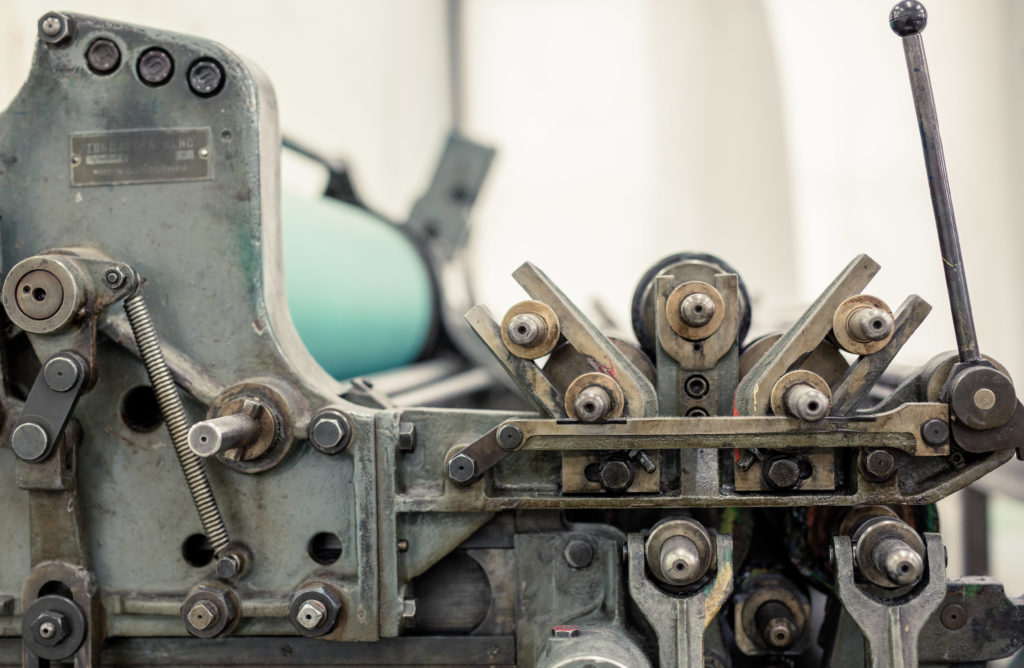
Offset lithography

Offset printing is based on the principles of lithography, that oil-based ink rejects water and water repels oil-based ink.
At the end of the nineteenth century the offset lithographic press was invented and metal plates came into use in lithography.
In an offset press the image is transferred from the stone or plate to the paper via a large steel roller covered in hard rubber blanket. It picks up the ink from the plate and then presses it onto the paper without the two touching each other. The printing plate, often made of zink or aluminium, is coated with a light sensitive polymer to transfer the image to the plate with lighting. The plate is placed in an offset printing press, where it is moistened and rolled over with colour. The printing plate transfers a mirror image with the ink on a rubber roller, which then runs over the paper offsetting the ink. This means that the image on the plate is not mirrored in the print, as it is in lithography.